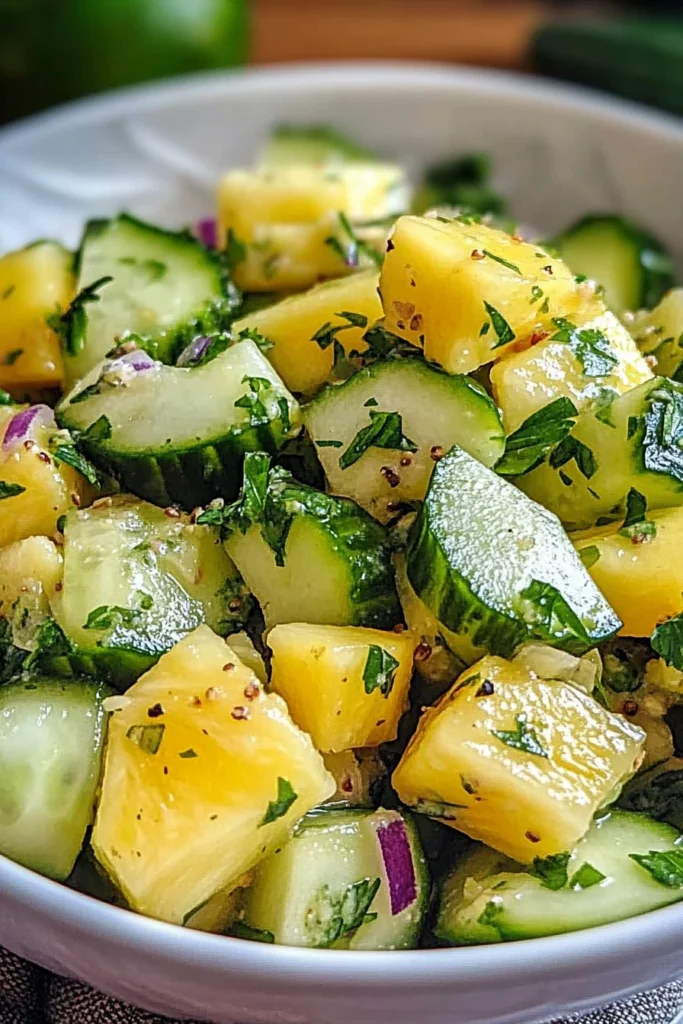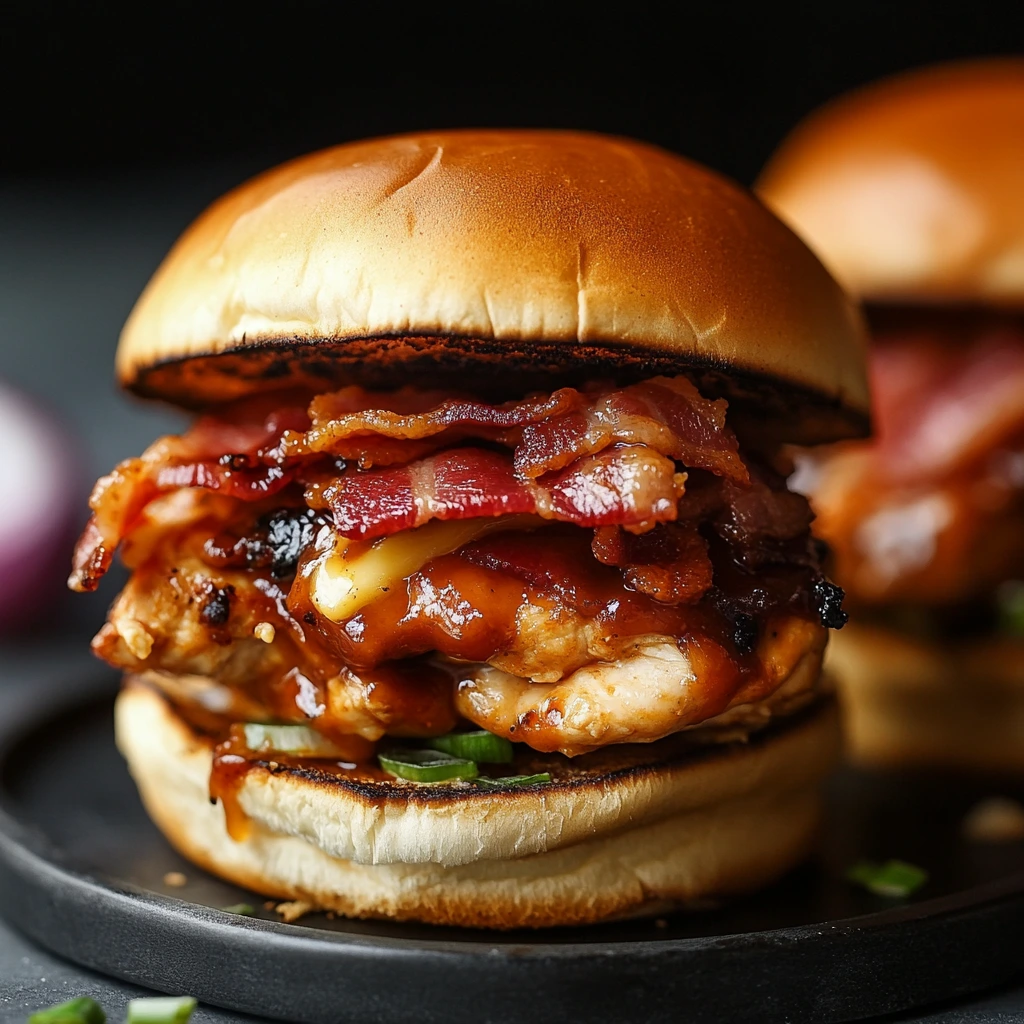Eggs Benedict is the epitome of a luxurious breakfast or brunch — a perfect harmony of textures and flavors. It features a toasted English muffin topped with savory Canadian bacon, a delicately poached egg, and a rich, buttery hollandaise sauce. Each bite is creamy, tangy, and deeply satisfying, making it a favorite in cafés, hotels, and home kitchens alike.
The Essence of Eggs Benedict
Eggs Benedict is a dish that celebrates balance and precision. The crisp muffin contrasts with the soft egg, while the hollandaise ties everything together with its velvety texture and buttery tang. It’s a dish that feels indulgent yet refined, perfect for special occasions or leisurely weekend mornings.
Why Eggs Benedict Is So Special
Eggs Benedict stands out because it combines simple ingredients in a sophisticated way. The poached egg, with its runny yolk, acts as a natural sauce that blends with the hollandaise to create a luxurious mouthfeel. The dish is versatile, allowing endless variations — from smoked salmon to spinach or avocado.
It’s a true classic that showcases the beauty of well-executed technique and balance.
Ingredients and Their Roles
English muffins: Provide a crisp, buttery base.
Canadian bacon or ham: Adds savory depth.
Eggs: The centerpiece — poached to perfection.
Hollandaise sauce: The crowning glory — rich, creamy, and tangy.
Butter and lemon juice: Key to the sauce’s flavor and texture.
Vinegar: Helps the eggs hold their shape while poaching.
Step-by-Step Recipe for Classic Eggs Benedict
Ingredients
- 4 large eggs
- 2 English muffins, split and toasted
- 4 slices Canadian bacon or ham
- 1 tablespoon white vinegar
- 2 tablespoons butter (for toasting muffins and bacon)
For the Hollandaise Sauce:
- 3 egg yolks
- ½ cup (115 g) unsalted butter, melted and warm
- 1 tablespoon lemon juice
- ½ teaspoon Dijon mustard (optional)
- Salt and cayenne pepper to taste
Preparation
1. Prepare the hollandaise sauce
- In a heatproof bowl, whisk together the egg yolks, lemon juice, and mustard.
- Place the bowl over a pot of gently simmering water (double boiler). Whisk constantly until the mixture thickens slightly.
- Slowly drizzle in the melted butter while whisking continuously until the sauce becomes thick and glossy.
- Season with salt and a pinch of cayenne pepper. Keep warm over very low heat or in a thermos.
2. Toast the muffins and cook the bacon
- In a skillet, melt butter over medium heat.
- Toast the English muffin halves until golden brown.
- In the same pan, heat the Canadian bacon slices until lightly browned.
3. Poach the eggs
- Fill a saucepan with about 3 inches of water and bring to a gentle simmer.
- Add the vinegar.
- Crack each egg into a small bowl, then gently slide it into the water.
- Poach for 3–4 minutes until the whites are set but the yolks remain soft.
- Remove with a slotted spoon and drain on paper towels.
4. Assemble the dish
- Place a toasted muffin half on each plate.
- Top with a slice of Canadian bacon.
- Gently place a poached egg on top.
- Spoon warm hollandaise sauce generously over the egg.
- Garnish with chopped chives or paprika.
Tips for Perfect Eggs Benedict
- Use fresh eggs: They hold their shape better when poached.
- Keep the water at a gentle simmer: Boiling water can break the eggs apart.
- Whisk constantly for hollandaise: Prevents curdling and ensures smooth texture.
- Serve immediately: Eggs Benedict is best enjoyed fresh and warm.
- Add lemon juice gradually: Adjust to taste for the perfect tang.
Variations to Try
Eggs Florentine
Replace the bacon with sautéed spinach for a vegetarian version.
Smoked Salmon Benedict
Use smoked salmon instead of bacon and garnish with dill.
Avocado Benedict
Add sliced avocado for a creamy, modern twist.
Crab Cake Benedict
Top with a crab cake for a coastal-inspired version.
Southern Benedict
Use biscuits instead of muffins and top with sausage gravy.
California Benedict
Add tomato slices, avocado, and arugula for a fresh, vibrant flavor.
Serving Suggestions
Eggs Benedict pairs beautifully with:
- Fresh fruit salad
- Roasted potatoes or hash browns
- Mixed greens with vinaigrette
- Mimosas or freshly squeezed orange juice
- Coffee or cappuccino
Serve on warm plates to keep the dish at the perfect temperature.
Storage and Make-Ahead Tips
- Hollandaise sauce: Best made fresh, but can be kept warm for up to 1 hour.
- Poached eggs: Can be made ahead and stored in cold water in the fridge for up to 24 hours. Reheat in hot water for 30 seconds before serving.
- English muffins and bacon: Can be toasted and reheated just before assembly.
Nutritional Information (per serving)
- Calories: 520–560 kcal
- Protein: 22 g
- Fat: 42 g
- Carbohydrates: 18 g
- Sodium: 780 mg
The History and Inspiration Behind Eggs Benedict
The origins of Eggs Benedict are debated, but most stories trace it to New York City in the late 19th century. One popular tale credits a Wall Street broker named Lemuel Benedict, who ordered buttered toast, poached eggs, bacon, and hollandaise sauce at the Waldorf Hotel in 1894. The chef loved the combination and added it to the menu — replacing toast with English muffins.
Since then, Eggs Benedict has become a brunch icon, symbolizing elegance and indulgence.
The Texture and Flavor Profile
The perfect Eggs Benedict is a symphony of textures — crisp muffin, tender bacon, soft egg, and silky sauce. The flavors are rich yet balanced: buttery hollandaise, salty bacon, and the gentle tang of lemon. The runny yolk adds a luxurious creaminess that ties everything together.
Each bite is smooth, savory, and deeply satisfying.
Troubleshooting Common Issues
Broken hollandaise: Whisk in a teaspoon of warm water or another egg yolk to bring it back together.
Overcooked eggs: Poach for no more than 4 minutes for a runny yolk.
Cold sauce: Keep the hollandaise warm in a thermos or over a double boiler.
Watery eggs: Drain well on paper towels before assembling.
Chef’s Tips for Professional Results
- Clarify the butter: For a smoother hollandaise.
- Use a blender: For a quick, foolproof hollandaise sauce.
- Add a pinch of cayenne: Enhances flavor without overpowering.
- Warm the plates: Keeps the dish hot longer.
- Garnish thoughtfully: Chives, paprika, or microgreens add color and freshness.
Pairing Ideas
- With Beverages: Champagne, Prosecco, or a Bloody Mary.
- With Sides: Roasted asparagus, sautéed mushrooms, or crispy potatoes.
- With Sauces: Try a lemon-dill hollandaise or chipotle hollandaise for variation.
The Joy of Making Eggs Benedict
Making Eggs Benedict is a rewarding culinary experience. From poaching the eggs to whisking the hollandaise, each step requires care and attention. The process is meditative, and the result — a beautifully plated, restaurant-quality dish — is worth every effort.
It’s a dish that transforms a simple morning into a special occasion.
The Science Behind Hollandaise Sauce
Hollandaise is an emulsion — a blend of fat and liquid stabilized by egg yolks. The key is temperature control: too hot, and the eggs scramble; too cold, and the sauce won’t thicken. Whisking constantly while slowly adding butter ensures a smooth, glossy texture.
The acidity from lemon juice balances the richness, creating a sauce that’s both light and decadent.
Presentation and Garnishing
For an elegant presentation, serve Eggs Benedict on white plates or shallow bowls. Spoon the hollandaise generously over the eggs, letting it cascade down the sides. Garnish with fresh herbs, a sprinkle of paprika, or a twist of lemon zest.
For a modern touch, serve with microgreens or edible flowers.
The Perfect Brunch Dish
Eggs Benedict is the ultimate brunch dish — elegant, flavorful, and satisfying. It’s rich enough to feel indulgent but balanced by the freshness of lemon and herbs. Whether served for a special occasion or a lazy Sunday morning, it always impresses.
The Comfort of Classic Cooking
This dish embodies the comfort of classic cooking — simple ingredients elevated through technique and care. It’s a reminder that mastery of the basics can create extraordinary results.
Creative Twists for Modern Palates
For a modern twist, try:
- Truffle Hollandaise: Add a few drops of truffle oil for luxury.
- Kale Benedict: Replace bacon with sautéed kale and garlic.
- Spicy Benedict: Add chipotle or sriracha to the hollandaise.
- Sweet Potato Base: Use roasted sweet potato rounds instead of muffins.
Each variation keeps the essence of the dish — creamy, savory, and elegant — while adding a unique flair.
The Perfect Balance of Creamy and Tangy
Eggs Benedict achieves the ideal balance of creamy hollandaise, tangy lemon, and savory bacon. The textures and flavors complement each other beautifully, making it a dish that feels both indulgent and refined.
It’s proof that true elegance lies in simplicity and precision.
Conclusion
Eggs Benedict is a timeless classic — perfectly poached eggs, toasted muffins, savory bacon, and silky hollandaise sauce. It’s elegant, comforting, and endlessly versatile.
Whether served for brunch, breakfast in bed, or a special celebration, this dish delivers sophistication and satisfaction in every bite. Eggs Benedict remains a symbol of culinary perfection — a true celebration of balance, flavor, and craftsmanship.







